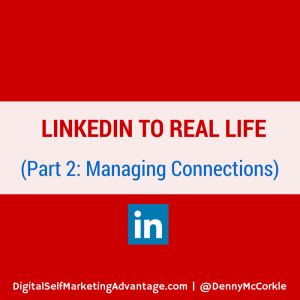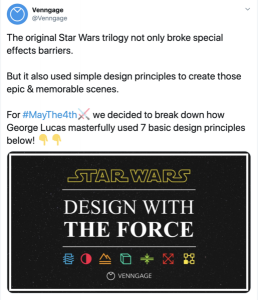Legacy brands can learn from the direct-to-consumer model with a value shift to serve customers and their needs that will ensure long-term success.
If I had to summarize the direct brand experience in a single sentence, I’d have to borrow AYR’s tagline: “Simplify everything.” Gone are the days of scheduling time between drop-offs, pick-ups and work to stop by the mall.
Need to try on a few styles? Don’t worry about it: Warby Parker will send you a few sets of glasses to try on at home. Top-notch customer service and breezy return policies make buyer’s remorse a thing of the past, while boxed sets eliminate the need to choose outright. Best of all, many direct brands take social responsibility seriously, offering ethically-sourced products to soothe even the guiltiest conscience; Bombas even donates returned socks to those in need (after they’ve been washed, of course).
Personally, I ditched Dove deodorant for Native, my Nikes for Allbirds, my Brooks Brothers for Birddogs and signed up to Quip for all my toothbrushing needs. But I’m not the only one in love with direct brands. After Unilever’s $1 billion acquisition of Dollar Shave Club, a growing number of legacy brands is seeking to absorb these upstarts, and it isn’t obviously in defense of market share. In 2015, Dollar Shave Club controlled 1% of the market, a drop in the bucket compared with industry leader Gillette’s 64%.
What, then, is motivating this emerging interest?

1. DTC brands know their audience
As their name suggests, direct brands have immediate access to consumers and their purchasing habits. Unlike legacy brands that rely on abstract sales figures and traditional market research, direct brands collect data on consumer preferences and behaviors at the source.
Coupled with the added insight of customer accounts, individual purchase histories and consumer feedback, direct brands can build precise and dynamic pictures of consumer groups. Like Netflix, which leveraged users’ viewing habits to develop curated content categories, direct brands can learn and adapt their product lines to target niche consumer interests.
Beauty retailer Glossier used data from their blog, Into the Gloss, to optimize the online shopping experience. Noticing that many readers would find products on their mobile device but switch to desktop to complete the transaction, Glossier linked user accounts across platforms.
Their small size and flexible structure make many direct brands ideally suited to pivot towards customer habits and preferences. The Menlo Club asks customers to fill out a short survey on stylistic preferences that inform the personalized clothing packages they ship monthly but adjust product offerings by identifying popular items or tastes is a staple of the direct model.

2. They’re more than just another product on the shelf
While direct brands sell commodities, they are not commodified. Direct brands stand out with targeted branding, distinct product offerings and a brand story awash with authenticity. No direct brand is quite like any other, giving consumers what they want most: choice.
They can’t beat legacy brands when it comes to standardization and familiarity, but direct brands lend even commonplace products a personalized appeal by listening to consumers. From seasonally-themed special releases to values-driven product development, direct brands transformed the retail experience to reflect the needs of today’s consumer.
The opportunity to actively choose the brand that speaks to you profoundly impacts the purchasing dynamic: you’re not just buying deodorant, you’re buying Native, and in doing so you are aligning yourself not just with a product, but with the brand and its values.
Consumers’ relationships with Dove, Old Spice, or Secret, in contrast, are equally passive. While the choice between marginally-differentiated alternatives has worked for decades, it does little to build brand loyalty and has helped create the space direct brands are moving into.

3. More than great press: communities drive loyalty
Direct brands don’t stop with eye-catching products and messaging when building communities of invested consumers. They supplement their social media presence with content that keeps audiences engaged in conversation before and after purchase. Casper, for example, publishes Wooly Magazine, which explores “comfort, wellness and modern life” on the web and in print.
Articles about hoodies in the autumn, self-care and co-living spaces, keep coziness and comfort top-of-mind, even when audiences aren’t thinking about mattresses or bedding. The proclamation that “This is a Casper ad” directs perusers to the retail site with a wry smile.
Converting interest to purchase, though, is almost incidental. By reaching beyond a purely transactional relationship with consumers, direct brands create opportunities for organic mentions, tapping into the awesome power of user-generated content to promote their products.
Subscriptions to FabFitFun come with more than beauty and wellness supplies: members get access to the brand’s video workout program and an online community encourages the sharing of health tips, discussion of favorite products and a sense of ownership in the brand narrative.

4. Businesses built for modern sensibilities
Great branding is just a means to an end though. Like their established counterparts, direct brands are motivated by sales, but they bring a twist to this too. Drawing on the startup mentality, they tout business models that ostensibly maximize efficiency and convenience. This often means more than just cutting out retailers or brick-and-mortar locations.
Many direct brands outsource non-essential work, lowering overhead and increasing competition throughout the production process. They claim to pass these savings on to consumers, but it is perhaps more significant that these values mirror those of a generation increasingly disillusioned with the traditional retail experience.
Direct brands make buying essentials fun again with glossy websites and members-only benefits, while allowing customers to try out different styles or products in the comfort of their own home eliminates the anxiety of choice for the indecisive or insecure.
Their approach enables direct brands to focus on their core business: consumer care. While the competition labors over production, distribution and retail partnerships, direct brands work to make the purchasing process as seamless as possible and on rewarding customer loyalty.

5. It’s all about salience
Responsiveness to consumer needs, new takes on old goods and developing close relationships with consumers all have merit enough on their own, but together they help create the very kinds of mental associations that are instrumental to brand consideration.
Every brand strives to increase its salience through its products and messaging. Legacy brands today enjoy much stronger salience than direct brands, but this is often due more to market saturation than consumer enthusiasm.
When you think of packaged mac and cheese you may think immediately of Kraft, but how much can you say about it that doesn’t apply equally to competitors? Research has shown that salience is driven in part by the number of unique and positive associations consumers make when they think of a brand, and this gives direct brands their advantage.
The question is no longer what you’re selling, but to who
With their fresh take on an impersonal purchase experience fraught with inefficiency and anxiety, direct brands flipped the script on consumer relationships. They focus their efforts on serving customers and their needs, while many legacy brands still take it for granted that essentials are just that: an unglamorous but necessary part of daily life.
While buying out the competition is a short-term solution for some legacy brands, a value shift is necessary to ensure long-term success. Consumers want choice, and, above all, they want to feel heard. All legacy brands can take a page from the direct-to-consumer playbook and reevaluate how (or if) they are making the purchase experience one consumers want to repeat.
Opinions expressed in this article are those of the guest author and not necessarily Marketing Land. Staff authors are listed here.
Marketing Land – Internet Marketing News, Strategies & Tips
(34)










